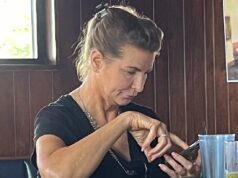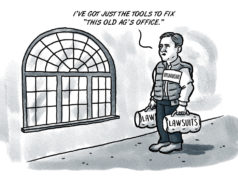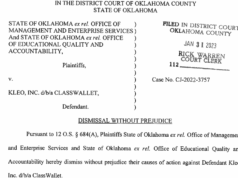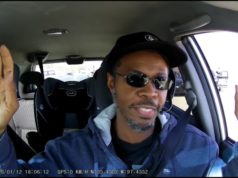
In 2012, four American men found an online ad on the now-defunct website CollarMe.com advertising kidnapped Malaysian women on temporary visas in the United States. The hook line: The women were “naturally very obedient.”
That was all it took.
One man offered $10,000 for two women, and, in 2014, eventually flew to Phoenix with u-bolts and gags to restrain the women. The man then told an undercover agent he would transport them back to his home in Montana where he had built a functional dungeon in his basement with barred windows.
Oops.
Fortunately, the “ad” was actually a scam, but the FBI was watching the inquiries pour in by the hundreds, and they were able to intervene before these men were able to carry through with their fantasies. But the most shocking part of this sting operation related to the men’s identities: One of the suspects was a financial analyst; the other an engineer with “Top Secret” government clearance.
Sad result of supply and demand
In recognition of National Slavery and Human Trafficking Prevention Month, it’s vital to understand this particular case, which, despite being a dark and somewhat extreme representation, is actually not shocking in its theme: white-collar crime in a most deceitful manifestation. The four men were eventually convicted of human trafficking in September 2015, but that doesn’t give cause for a sigh of relief.
Human trafficking isn’t just a global problem, it manifests every day on U.S. soil — even today, which is National Human Trafficking Awareness Day. Representing the worst of human degradation, it’s also a problem in Oklahoma, particularly as sex trafficking.
The Trafficking of Victims Protection Act (TVPA) defines human trafficking as a commercial sex act induced by force, fraud or coercion, or in which the person induced to perform such an act has not attained 18 years of age; or the recruitment, harboring, transportation, provision or obtaining of a person for labor or services, through the use of “force, fraud or coercion.”
In its most simple description, human trafficking is a sad result of supply and demand. As long as people watch pornography or sleep on cotton sheets, and as long as dishonest restaurants need dishwashers, human sex- and labor-trafficking supply chains will creep into our everyday lives.
Owing to the covert nature of the crime and the fear the captors instill in their victims, the problem is extremely under-reported, making statistics scarce and hard to identify, especially on a state level. According to HumanTrafficking.org, 14,500 to 17,500 people are victims of trafficking in the U.S. each year, but those statistics don’t correlate to the 19,724 hotline cases received by the National Human Trafficking Resource Center Hotline.
Law enforcement catches up
The stigma surrounding sexual exploitation (and particularly prostitution) also adds to the confusion in identifying victims, which is why, until recent years, “sex trafficking” wasn’t really even considered to be a reality. The game changer was when the TVPA passed in 2000: It finally prompted law enforcement to identify what used to be considered criminals, such as “prostitutes” or undocumented workers, as trafficking victims.
From an Oklahoma perspective, it wasn’t until 2012 that the Oklahoma Bureau of Narcotics was even given the authority to start investigating human trafficking, which bears the question: What do sex trafficking and drugs have in common? Think from a drug dealer’s perspective: An “eight ball,” the commonly sold 3.5 grams of cocaine, can only be sold once. A girl, young woman or boy can be sold over and over and over again.
In addition, Oklahoma has the perfect backdrop for sex trafficking with it’s high divorce rates and low socio-economic, single-parent homes resulting in vulnerable children and young women. This vulnerable demographic, along with victims of sexual abuse, is then targeted by traffickers, or “pimps,” who convince the victims they will be financially “taken care of” and most of all “loved.” This usually spirals into a dangerous cycle of Stockholm Syndrome or “trauma bonding,” causing the victims to empathize with the traffickers, in turn refusing to report them to authorities. Some female victims are even convinced to tattoo the names of their pimps on their bodies as a sort of devotion and mark of “ownership.”
State-certified programs exist
Fortunately, there are three state-certified organizations qualified to assist sex-trafficking victims, all of which required certifications by the Oklahoma State Office of the Attorney General Victim Services Unit and have 24-hour hotlines. Beautiful Dream Society in Oklahoma City, Dayspring Villa and Domestic Violence Intervention Services, both in Tulsa, have residential programs assisting female sex-trafficking victims recovered in Oklahoma.
However, Beautiful Dream Society’s communications director, Melissa Eick, said it’s important to remember women aren’t the only demographic targeted by pimps and stressed the availability of their program’s resources.
“For the male victims of sex trafficking and victims of labor trafficking, which we aren’t able to put into our residential programs, we connect them with community resources,” Eick said.
Since BDS’s opening in 2013, they have serviced 72 residential victims and nine children with multiple success stories, which I had the pleasure of hearing during my 60-day internship with the organization this past summer.
But with success stories comes heartache and tears. For example, Dayspring Villa, has serviced 108 women between the ages of 18 and 54 since opening in 2012. Of those, 52 percent had an alcohol addiction and 81 percent had drug addictions.
Wilma Lively, executive director of Dayspring Villa, paints an even harsher picture of the effects of sex trafficking.
“Fifty-five percent of the victims we’ve helped attempted suicide, sometimes multiple times,” Lively said.
Fortunately, because these organizations exist, no matter how sparse they might be, some trafficking victims recover to live healthy, amazing lives full of self worth and love; “love” that isn’t fraudulently cultivated by a pimp.
BDS is holding numerous events in honor of Human Trafficking Awareness month, including a candlelight vigil Jan. 29. For a list of events, click here.





















